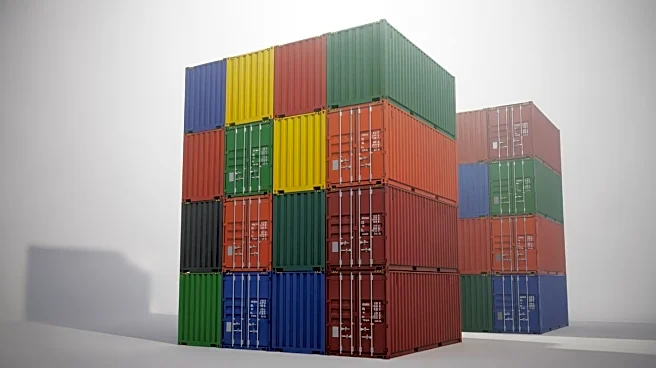What's Happening?
The National Retail Federation (NRF) has released its monthly report predicting a continued decline in container import volumes through major U.S. ports, projecting figures to fall below two million TEU
per month through the first quarter of 2026. This forecast comes amidst ongoing tariff uncertainties, although recent reductions in tariffs are expected to slightly increase import volumes compared to earlier forecasts. The NRF notes that most holiday merchandise is already in stores or warehouses, contributing to the usual end-of-year slowdown in import cargo volume. Despite these challenges, the NRF forecasts a 3.7 to 4.2 percent increase in holiday sales for 2025 compared to 2024, marking the first time U.S. holiday season sales could exceed $1 billion.
Why It's Important?
The projected decline in container imports has significant implications for the U.S. retail industry and supply chain management. Retailers have been front-loading imports to mitigate tariff uncertainties, which has affected inventory levels and planning. The NRF's forecast suggests that while holiday sales may increase, the overall import volume will decrease, impacting logistics and potentially leading to adjustments in supply chain strategies. This decline could affect ocean carriers and importers, who face challenges in long-term planning due to fluctuating tariff policies. The NRF's forecast indicates a broader economic impact, with potential repercussions for consumer prices and retail operations.
What's Next?
The NRF anticipates that the decline in import volumes will continue into 2026, with January forecasted at 1.98 million TEU, February at 1.85 million TEU, and March at 1.79 million TEU. These figures represent significant year-over-year declines, suggesting ongoing challenges for the retail and logistics sectors. Stakeholders may need to adapt their strategies to navigate these changes, potentially involving shifts in inventory management and supply chain operations. The NRF's projections highlight the need for retailers and importers to remain agile in response to evolving market conditions and tariff policies.
Beyond the Headlines
The fluctuating import volumes and tariff policies underscore the complexities of global trade and its impact on domestic markets. The NRF's report highlights the interconnectedness of international trade policies and local economic conditions, emphasizing the need for strategic planning and adaptability among U.S. businesses. The ongoing tariff uncertainties may also influence broader economic trends, including inflation and consumer spending patterns, as retailers adjust their pricing and inventory strategies in response to these challenges.











